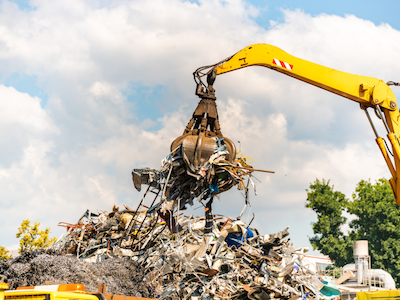Decarbonization

September 5, 2025
Update on the state of electricity supply-demand in the U.S.
Written by Greg Wittbecker
The U.S. aluminum market is still impacted by Section 232 tariffs that are ostensibly designed to encourage renewed domestic primary aluminum production.
So far, these tariffs have produced only one tangible result: The planned restart of Century Aluminum’s remaining 50,000 metric tons/year (t/yr) of capacity at Mt. Holly, SC.
Century should be applauded for announcing this restart. However, they spent a lot of political capital getting Section 232 tariffs in place in March 2018, as well as the recent boost to 50% ad valorem rates in June 2025. It remains to be seen what their payback will be on that.
We, of course, still have the promise of Century’s new 400,000-500,000t/yr greenfield smelter, backed by $500 million in government grants. There is also great excitement about Emirates Global Aluminium’s (EGA) planned 600,000t/yr greenfield smelter in Oklahoma.
Both projects depend almost exclusively on the ability to strike a power deal.
Current electricity conditions in the U.S.
The International Energy Agency (IEA) has just released its “Electricity Mid-Year Update 2025” that gives us some perspective on the U.S.:
- Generation by source was erratic.
- Coal-fired generation rose 15% as the Trump Administration discouraged decommissioning obsolete capacity.
- Natural gas-fired generation fell 4% as utilities shifted to higher gas prices.
- Nuclear generation declined 1.5%; although, recent announcements by the Tennessee Valley Authority (TVA) indicate that the federally owned utility company is pushing a deal with ENTRA1 Energy forward to develop 6 gigawatts (GW) of small modular reactor generation.
- Renewables grew by 11%, with solar leading at a stellar 30% rise in photovoltaic output, while wind generation increased by 5% over the same period. Hydro edged higher by 1.3% as improved water conditions exist in the Pacific Northwest and East regions of the U.S.
The U.S. Energy Information Administration (EIA) estimated that net generation in the first six months of 2025 was 2,132,000 megawatt-hours (MWh), up from 2,071,000 MWh in the prior year period.
The EIA believes that for the full year 2025:
- Energy mix shifting under uneven momentum.
- Coal may maintain most of its momentum, finishing the year up 8%, but then declining by 6.5% as those obsolete plants are decommissioned.
- Gas generation will end up the year down 36% before rising 1.6% in 2026.
- Nuclear will be steady for the rest of the year before growing by 2% in 2026.
- Renewables will finish 2025 ahead by 10% and will follow it up with another 7.5% rise in 2026
- Notwithstanding the potential loss of federal tax credits, solar photovoltaic is forecast to rise 26% this year and a strong 18% in 2026.
- Wind will be up 5% and 2% respectively, although recent moves by the Trump Administration to halt offshore wind projects may jeopardize these projections.
Demand projections: Strong
Hardly a surprise to even the most casual follower of the power markets, but electricity demand remains strong. The EIA estimates in the first half of 2025 demand rose 2.7%. The forecast for the full year 2025 is to finish up 2.3% and follow up with a 2.2% rise in 2026.
Data centers continue to be the major driver, with the leading tech companies forecast to spend over $320 billion on infrastructure in 2025.
However, there is large industrial demand-pull coming from other sectors. Semiconductors and battery producers are also drawing big loads. Investment in these two sectors alone is double what it was in 2022.
Prices: Not encouraging aluminum production
The EIA says wholesale electricity prices rose 40% year on year in first half 2025, averaging $48/MWH.
Current futures prices on the Chicago Mercantile Exchange (CME) for the Midcontinent Independent Systems Operator (MISO) Indiana Hub do not give reason for optimism.
The MISO Indiana Hub is the main trading point for electricity prices across the Midwest grid, making it a benchmark for energy-intensive industries like smelting in a region historically central to the U.S. aluminum industry.
The MISO Indiana Hub futures price for October 2025 delivery is trading $47.65/MW. Meanwhile, prices for 2026 range from $51-$76/MW, while indicative numbers for 2027 are $60-$78/MW.
When futures prices are elevated and in contango it signals persistently high forward costs rather than relief, which undercuts the economics of operating a smelter.
None of these numbers solve for either restarting a U.S. smelter or investing in a new smelter.
Why This Matters
The aluminum market, whether you are a buyer or a seller, is rooting for Century and EGA to succeed in getting their respective smelters built.
Unfortunately, the demand pull for electricity is on a steady upward trajectory, and that demand is quite price inelastic, especially from data centers.
This means that negotiating long-term power deals “in front of the meter” or buying electricity from the grid from an outside utility at prices set in the wholesale market is going to exceedingly difficult.
We believe for either party to succeed, they will have to go “behind the meter.” In other words, they are going to have to build dedicated generating capacity on their plant site that is not subject to market demand pull.
This in situ capacity might be built by Century or EGA. It could also be built by a third-party that amortizes the investment with a 20- to 30-year deal with the companies for power. That structure allows the third-party investor to raise the capital for the project, and it gives the smelter the surety they need to build the smelter.
There are practical constraints in this type of deal, such as lead times for generators and transformers, but it seems an easier path forward than butting heads with utilities that face no shortage of buyers for their electricity.







